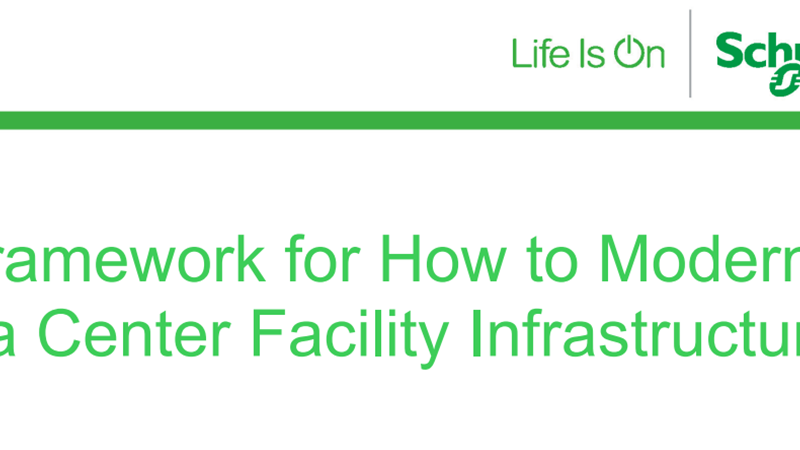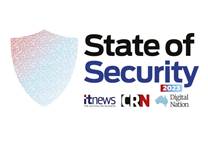.png)
As transformation accelerates, sustainability has never been more important
Without meaningful action, soaring cloud investments will threaten sustainability goals
Australia has “significantly raised its climate ambitions” but must double emission reductions and energy efficiency improvement rates by 2030 to achieve long-term net zero emissions targets, an International Energy Agency (IEA) review has warned.
Despite warning a decade ago that growth in IT energy consumption could damage the world’s chances of stemming global warning, the newly released IEA report – its first country analysis since 2018 – lauded Australia’s recent “positive steps to increase its climate and clean energy ambitions”.
Australia is currently accelerating a clean energy transition that will, the IEA said, “support the country’s economic diversification and industrial growth while providing long-term resilience against global energy market shocks.”
“Australia is an important player in global energy markets that is helping to meet today’s needs while advancing the transition to clean energy,” noted IEA executive director Fatih Birol, who welcomed Australia’s “leadership on working with partners… to strengthen the diversity and resilience of clean energy supply chains.”
Yet for all its progress, efforts to improve Australia’s corporate sustainability credentials are encountering headwinds as accelerating adoption of emerging technologies like generative AI, Web 3 and the metaverse drives cloud infrastructure providers to deploy more technological infrastructure, faster than ever.
With Gartner recently forecasting that worldwide end-user spending on public cloud services will grow by 21.7 per cent this year – to be worth nearly $900 billion ($US597.3 billion) this year alone – the growth of hyperscale cloud providers will be driven by across-the-board surges in spending that will continue through 2024 and beyond.
Expenditure on infrastructure as a service (IaaS) offerings, for example, will increase by 70 per cent through 2024 while platform as a service (PaaS) will surge by 52 per cent and software as a service (SaaS) by nearly 40 per cent.
“Organisations today view cloud as a highly strategic platform for digital transformation,” said Gartner vice president analyst Sid Nag, “which is requiring cloud providers to offer more sophisticated capabilities as the competition for digital services heats up.”
To support this growth, hyperscale providers are only set to accelerate the breakneck pace of their infrastructure expansion, scaling capacity and adding new facilities as they push the intelligent edge closer to their customer environments.
That growth complicates sustainability arguments by dramatically increasing the environmental footprint of new infrastructure and services – and the problem is compounded at the cloud ‘hyperscaler’ level because the aggregate environmental burden is growing even faster at the service provider layer than at any one company.
“The technology substrate of cloud computing is firmly dominated by the hyperscalers, but leadership of the business application layer is more fragmented,” Nag explained.
“Providers are facing demands to redesign SaaS offerings for increasing productivity, leveraging cloud-native capabilities, embedded AI and composability, particularly as budgets are increasingly driven and owned by business technologists.”
“This change will ignite a wave of innovation and replacement in the cloud platform and application markets.”
Reining in the cloud’s energy footprint
That wave of innovation may be good for cloud infrastructure and service providers, but it complicates the sustainability equation for enterprises that face increasing pressure to factor sustainability into their corporate governance and operating decisions.
Those decisions will increasingly be shaped by an often poorly understood reality: the cloud may be designed as a low-infrastructure option for its users, but that doesn’t mean it is a low-infrastructure option for the companies delivering it.
With data centres crucial to digital growth but consuming more than 200 terawatt hours (TWh) of energy every year – more than the energy consumption of some countries – sustainability initiatives within the sector have an important role to play in helping Australia meet the net-zero emissions goal it has currently set for 2050.
Such initiatives are urgently needed, the IEA warned, noting that Australia’s overhauled policy settings are shifting the balance of power generation toward renewables – but that decarbonisation efforts “need to be stepped up considerably” to meet targets of 82 per cent renewable energy by 2030.
Australia’s data storage and processing operators are taking steps to reduce their energy footprints as they continue to expand: Amazon Web Services, for one, recently opened a Melbourne cloud region with its increased power consumption offset by an expanding renewables footprint including solar farms in Gunnedah and Suntop, and a wind farm at Hawkesdale that will collectively produce 717,000 MWh of power.
Other infrastructure operators are taking steps to shift their power generation to renewable sources like solar and hydro power – but the full sustainability story is about more than just reducing power consumption.
Rapidly transforming industries’ insatiable appetite for computing power is driving increased consumption of lithium batteries, silicon processors, steel data centre racks and infrastructure, copper wiring, and a range of rare earth metals as well as the many other elements that comprise a contemporary cloud data centre.
To reconcile their appetite for cloud infrastructure with corporate sustainability goals, enterprises must address their energy consumption – both directly through their own systems, and indirectly through the systems of their infrastructure and other cloud suppliers – and lay down clear plans to contain this as their cloud investment continues to explode.
Electricity 4.0: Turning sustainability ambition into action
The requirement for sustainable operation has driven what infrastructure giant Schneider Electric, for one, calls Electricity 4.0 – the convergence of digitalisation and electrification at scale.
Designed to push real-time intelligence gathering out to the intelligent edge, the Electricity 4.0 paradigm includes technologies such as advanced automation, metering, and monitoring that taps the capabilities of smart devices, apps, analytics, and software that can identify areas of greatest resource consumption.
As a way of helping businesses integrate smart resource consumption practices into their digital transformation plans, Electricity 4.0 is part of a long-term corporate sustainability strategy that aims to deliver 800 million tonnes of saved and avoided CO2 emissions to the company’s customers by 2025.
In growing green revenues to 80 per cent of its business and halving the CO2 emissions from its top 1000 suppliers’ operations, Schneider Electric – which was named the world’s seventh most sustainable corporation this year by Corporate Knights, and the most sustainable among its peers – has positioned sustainability as the catalyst for a range of business enhancements.
Aligned with the United Nations Sustainable Development Goals, that also address areas such as resource consumption and the trust of suppliers and employees, the framework outlines a commitment to improving gender diversity and equality. It also includes access to green electricity; training and career opportunities for the next generation; and a focus on impactful local initiatives that support the company’s corporate purpose.
“It’s easy for businesses to talk up their sustainability ambitions with high-level sustainability mantras, but much harder to deliver real improvements in practice,” said Astrid Groves, general manager for channels, alliances, and operations with Schneider Electric.
“By instrumenting the intelligent edge as they continue investing in crucial cloud-based services, businesses can better align their digital transformation initiatives with their own corporate sustainability objectives – reducing operating costs, enhancing partner relationships, and building consumer trust in the process.”
Working with the channel to drive sustainable change
As a key tool for improving the visibility of existing resource consumption – and reducing that consumption in the future – Electricity 4.0 delineates an important baseline capability to help suppliers and partners to turn broad sustainability initiatives into real action.
It is first of three key initiatives that Schneider has implemented to help turn its corporate sustainability ideals into actionable capabilities – and drive real change across its business.
The second key deliverable lies in partner-focused programs such as Trade-UPS, which offers rebates to APC by Schneider Electric Select, Premier and Elite partners to help their customers trade in old uninterruptible power supply (UPS) units of any brand.
After being replaced with more efficient APC-branded UPSes, the old units are dismantled and recycled – providing a comprehensive product stewardship plan to promote circularity, and to prevent inefficient and ageing equipment from compromising sustainability ideals.
The third arm of the company’s sustainability action plan is its delivery of preventive and predictive maintenance capabilities, which are enabled through the company’s Ecostruxure IT portfolio of DCIM software tools – which allow end users and service providers to track PUE, energy and carbon down to the subsystem level, providing automatic energy reporting through dashboards and reporting capabilities.
A design portal provides partner tools like Local Edge Configurator and Row Data Centre Configurators, which design and configure complete IT solutions with a priority on longevity and serviceability.
Schneider’s commitment is to integrate sustainability into every aspect of the channel engagement.
Initiatives such as the Green Premium ecolabel extend this commitment by providing critical information to help partners ensure complete Product Environmental Profiles, end-of-life instructions, optimised use of natural resources, lower TCO, and compliance with relevant environmental regulations.
Partners’ access to these tools, with the support of a global network of sustainability experts, enable service providers to work with their customers to anticipate, monitor, and optimise a range of activities that are measured against corporate sustainability objectives.
Shaping transformation with sustainability
As the pace of expansion continues to increase, scoping, defining and executing such plans will be increasingly important to help businesses offset the carbon impact of their digital transformation investments.
Data will be fundamental to successfully executing this change, with the most successful businesses those that implement the tools to track, measure and optimise their environmental footprint as part of a broader sustainability paradigm.
Such paradigms will, World Economic Forum and Boston Consulting Group analysis shows, provide up to 25 per cent growth in companies with the right sustainability initiatives – and they can be most effectively implemented by using data-driven tools such as Schneider’s Zeigo Activate – a part of the Zeigo tools ecosystem that helps SMEs measure their emissions baseline, set reduction goals, and accelerate decarbonisation efforts.
Both for its direct business benefits and its follow-on benefits in areas such as staff attraction and retention – today’s workers place a premium on working for companies with clear environmental, social and governance (ESG) plans – sustainability has become a critical focus area for today’s businesses.
Yet it is far from easy to make the transition, with Schneider Electric’s recent Sustainability Index 2022 – which surveyed 500 Australian decision-makers about their sustainability plans – finding that just 14 per cent of respondents had actually developed and published an action plan to reduce the impact of climate change on their operations.
And while three-quarters of respondents see sustainable transformation as a competitive advantage, 55 per cent said they were still in early days of thinking about sustainability, with a similar percentage expecting that their companies won’t make a public commitment to net-zero targets before 2030.
Therein lies the gap between the gauntlet thrown down by the IEA – requiring swift, decisive and accelerated action by Australia’s businesses – and the reality that sustainability objectives to date have been much slower, less ambitious, and more tentative than is necessary to deliver the required improvements.
To maximise the chances of driving real and effective change, said Groves, it’s worthwhile for businesses to reach up and down their supply chains, engaging similarly-minded partners whose support can amplify the efficacy of their sustainability initiatives.
“Our insatiable appetite for cloud-based transformation is creating very real challenges for businesses pursuing sustainability objectives based on reducing the environmental footprint of digital transformation,” Groves said.
“And while years of consensus have confirmed that sustainability is a smart business choice – and an essential corporate objective – integrating a sustainability mindset, backed by tools and frameworks that can help deliver real results, has become essential for any company that hopes to make sustainability a core part of its growth going forward.”
Resource Centre
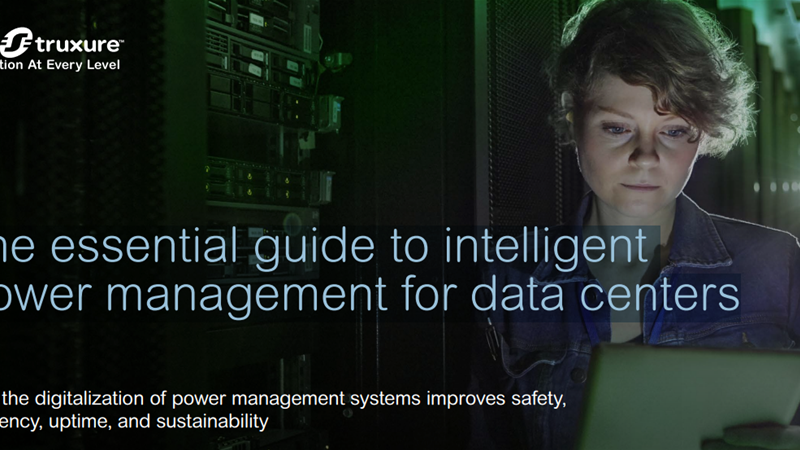
The essential guide to intelligent power management for data centers
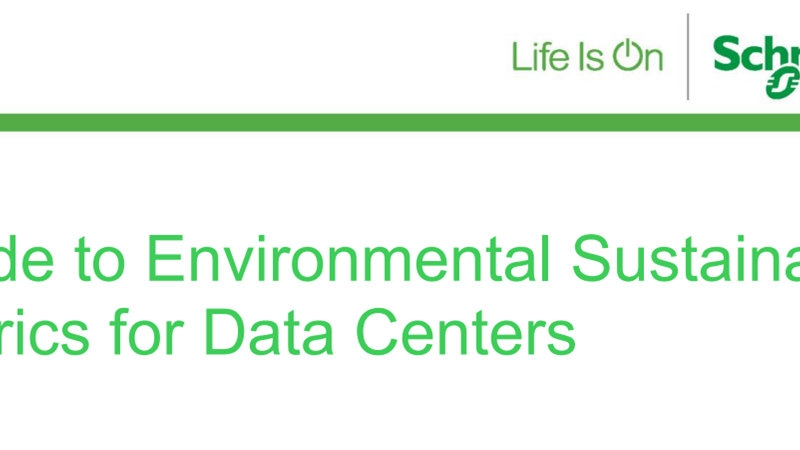
Guide to Environmental Sustainability Metrics for Data Centers
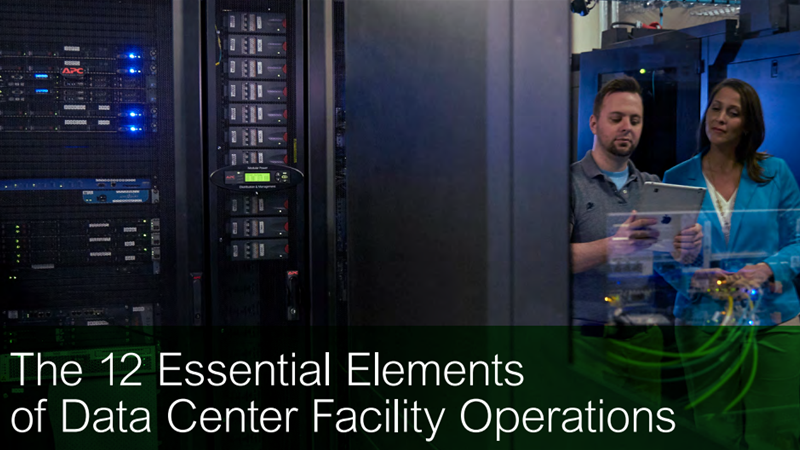
The 12 Essential Elements of Data Center Facility Operations
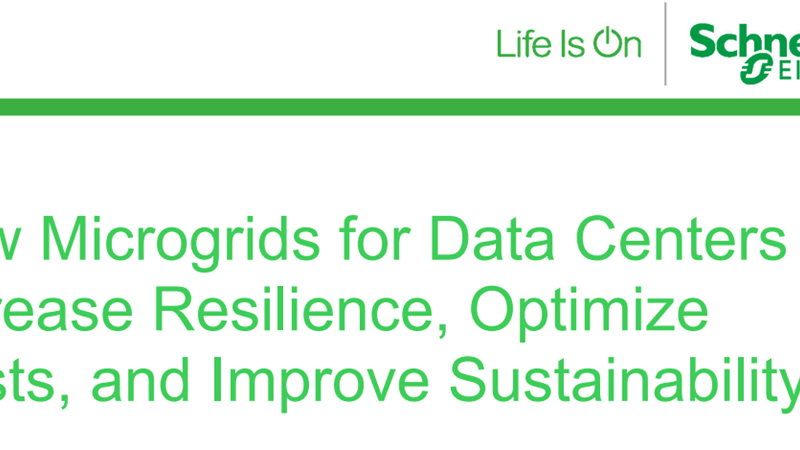
Microgrids for Data Centers Increase Resilience, Optimize Costs, Improve Sustainability
